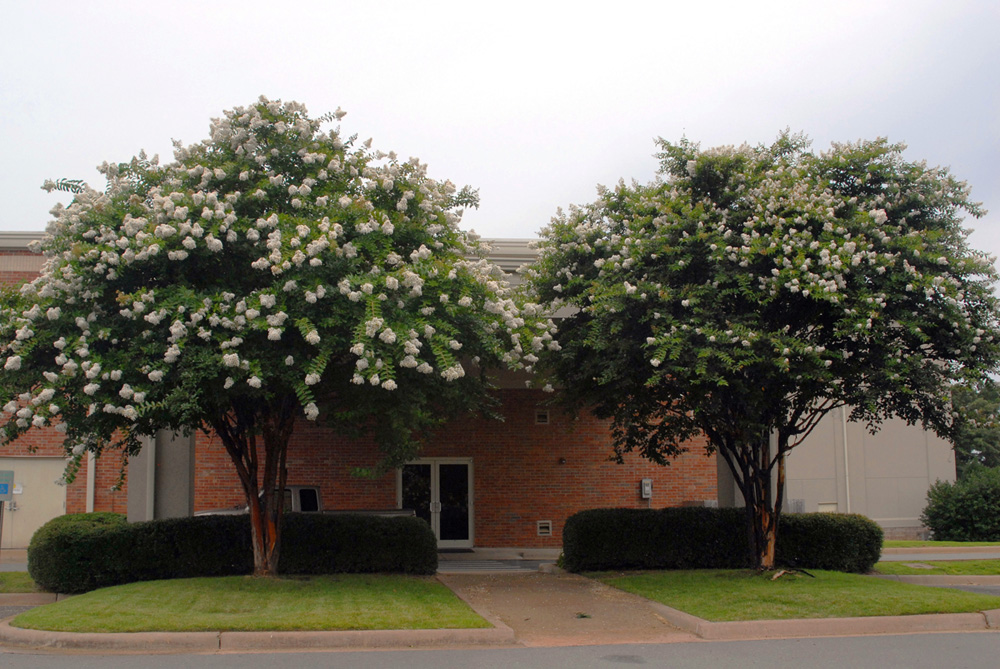
Two ‘Natchez’ crape myrtles demonstrate the potential impact of bark scale on the size and number of blooms in early summer. The tree on the left was treated seven weeks earlier with the insecticide dinotefuran, the one on the right was left untreated. Note the smaller blooms and mold-covered bark on the untreated tree. Photo by Jim Robbins, U of Arkansas.
As the crape myrtle bark scale spreads throughout Texas, one of the first questions we hear is “will the scale kill my tree?”
The answer appears to be “no”, at least not often. To date we’ve not been able to show any crape myrtle tree death as a result of a bark scale infestation. But like many sap-feeding scale insects, these little scales can stress and reduce the appearance of the trees, while producing a prodigious amount of sticky “honeydew” that can coat the leaves and anything under the tree (including freshly washed cars).
Thanks to Drs. John Hopkins and Jim Robbins of the University of Arkansas Cooperative Extension Service, we can now show you what we believe is likely to be another impact of these scales on trees–namely, smaller flower clusters and reduced blooming. The above picture was taken of two trees at a church in Little Rock, Arkansas. The tree on the left was treated with Zylam® Systemic Insecticide on the 28th of May, and the one on the right was left untreated. Zylam® (active ingredient dinotefuran) was applied as a drench in 5 gallons of water between the trunk and a circle three feet away from the trunk. The picture was taken seven weeks after the treatment was made.
Note that this picture is not the same as a scientific trial, which would involve more trees to ensure that the differences seen here were not accidental. Nevertheless, according to Dr. Hopkins, scale numbers and honeydew were noticeably less on the treated tree. And there was a difference in the average bloom size between the treated and untreated tree, with blooms being noticeably larger on the treated tree.
John estimated that the cost to treat the tree on the left would be approximately $39, not cheap, especially if you have multiple trees to treat. But at least you see what the expected benefit from tree treatment might look like.
The other question we are getting is: “If I treat my crape myrtles with a neonicotinoid insecticide, is it likely to affect the honey bees around my home?” While there is growing concern about the impact of soil-applied neonicotinoid insecticides on honey bee and pollinator health, crape myrtles do not appear to be highly attractive to bees (entomophilic). Currently we don’t believe that a properly applied soil insecticide (following label directions) will have any significant impacts on foraging bees. But if anything changes in that formula, we’ll be sure to let you know. We are also continuing to look for less susceptible varieties of crape myrtle and safer, less expensive treatments for this scale.